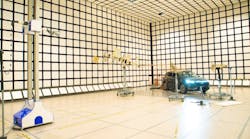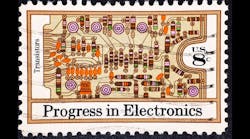While radar certainly has a long history, tech developments over the last few years have catapulted modern radar systems to new levels of capability. Major advances include gallium-nitride (GaN) technology and high-speed converters. Other significant factors involve digital beamforming, as well as the push for more flexible platforms that can satisfy multiple missions. This article dives into the current radar landscape, examining these topics and more.
Tubes, GaAs, and GaN
Peter Delos is a systems engineer in the aerospace and defense group at Analog Devices. With years of experience in developing radar-system architectures, he can provide valuable insight into today’s radar market. But before speaking about the current market, Delos first offered a historical perspective of radar.
“If we go back to the history of radar, it primarily started in the World War II timeframe,” said Delos. “There were big power tubes and rotating dishes. Then the phased-array world came into fruition, which started in a couple phases. The tubes stayed, but then there were phase shifters and large arrays. That was done all throughout the last century.”
Delos explained when the radar landscape began to change. “Around the late 1990s or so, gallium arsenide (GaAs) came together and the T/R modules came together. That was the first transition to replace tubes in phased-arrays. The radar back-end processing was similar, but the T/R modules flooded the front ends of the phased-array world. That was the first definition of a solid-state array.”
Solid-state technology has continued to advance in recent years. Specifically, as many may already know, GaN technology is now a major factor in today’s radar-system development. “As the power-amplifier (PA) technology improved, the world migrated to GaN,” noted Delos. “We see that as a dominant force going into the future. We’re working actively in that area in terms of PAs and low-noise amplifiers (LNAs).”
While the primary benefits of GaN technology have been well-publicized, other benefits exist that may not receive as much attention. These benefits are significant as well, according to Delos. “There are some secondary benefits of GaN that are really enablers for many customers,” he said. “At the LNA side, there is a higher breakdown voltage. That translates into higher survive power, which can translate into the removal of limiters. That translates to better overall noise figure for the system, which is a big factor. We have GaN LNAs coming out now, as well as some in development that are going to have much higher survive power.”








